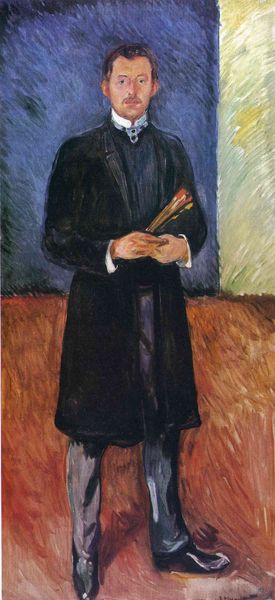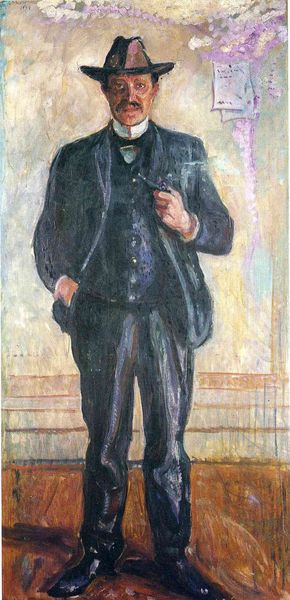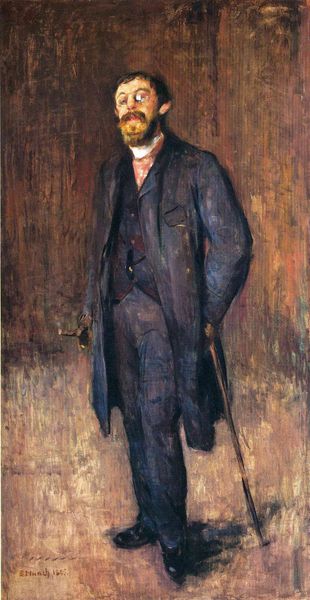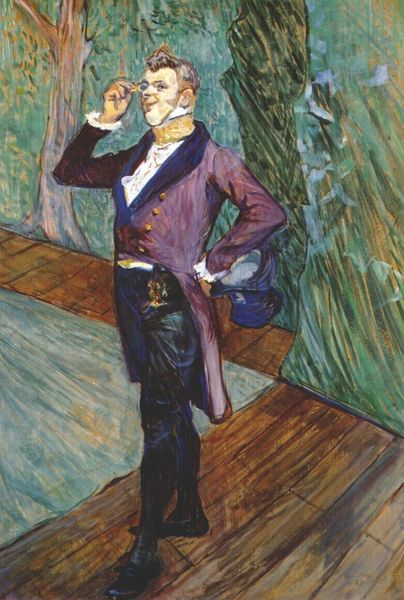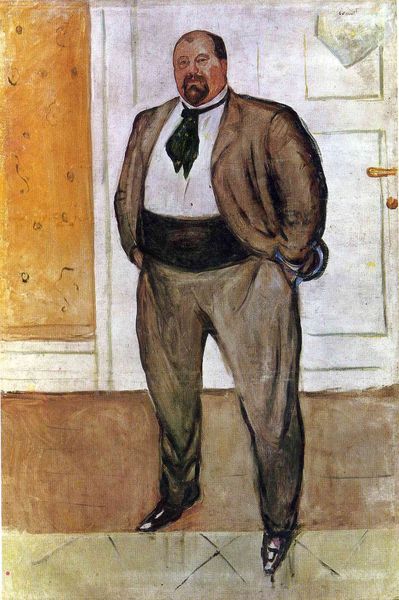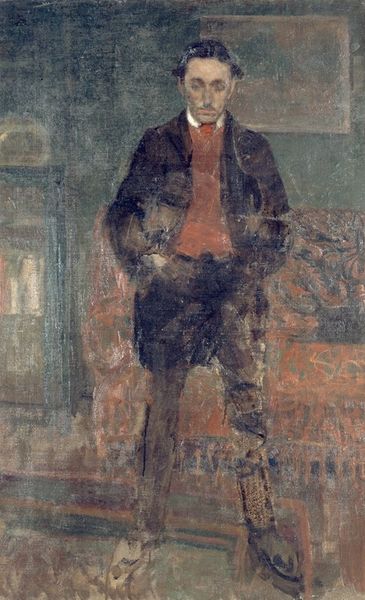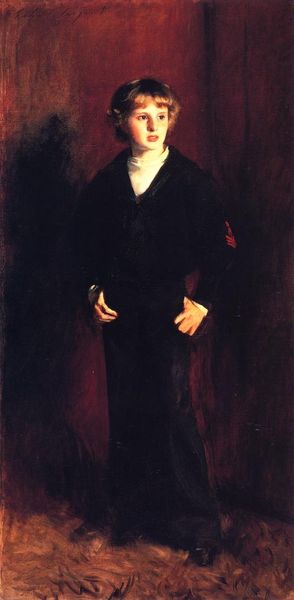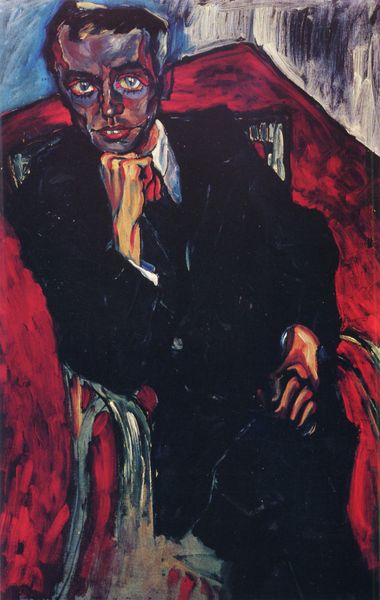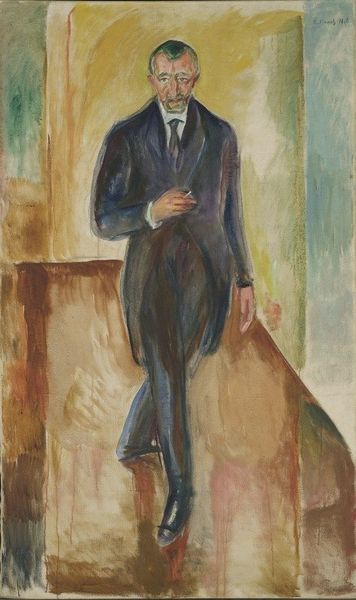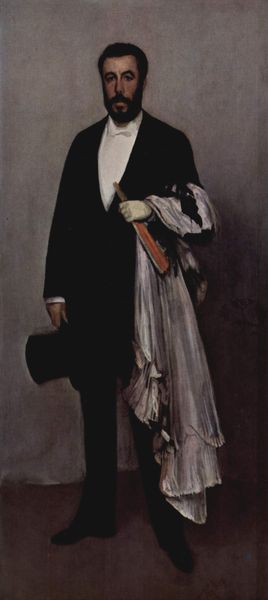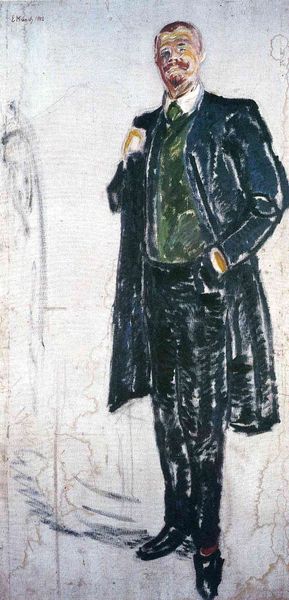
Dr. Tapie Celeyran in a corridor of the French Comedy 1894
0:00
0:00
henridetoulouselautrec
Musee Toulouse-Lautrec, Albi, France
Dimensions: 109 x 56 cm
Copyright: Public domain
Editor: Here we have Henri de Toulouse-Lautrec's "Dr. Tapié de Céleyran in a corridor of the French Comedy," painted in 1894 using oil on canvas. The figure seems so isolated, despite the setting. How do you interpret this work, especially regarding its social commentary? Curator: That sense of isolation is key, I think. While seemingly a portrait of a successful doctor within a place of leisure, Lautrec’s positioning of Dr. Tapié, almost swallowed by the background, raises interesting questions about visibility and representation. Think about the theatre itself, a place of performative identity and class display. How might Lautrec be critiquing these social rituals? Editor: It’s like he's both present and absent, sharply dressed, but fading into the architecture. I notice some art historians see parallels to some of Degas' compositions, what is your take on this argument? Curator: Precisely. Considering Degas' depictions of the marginalized – dancers, laundresses – we might see Lautrec similarly challenging the established hierarchy. Dr. Tapié, though of a certain social standing, appears almost consumed by the superficiality of the environment, suggesting a critique of societal pressures. Where does the individual fit in a world so obsessed with appearances? Editor: So, is Lautrec possibly exploring themes of alienation and perhaps, the superficiality of bourgeois society? Curator: Exactly! And think, too, about Lautrec’s own experience with marginalization. His physical disability deeply affected his place in society, perhaps fostering an empathy and a critical eye towards those on the fringes, even those seemingly at the center. Editor: It’s amazing how much complexity is packed into what initially seems like a straightforward portrait. I'll definitely consider this painting differently now. Curator: Absolutely. Art, at its best, prompts us to question our assumptions about the world and the power dynamics within it.
Comments
No comments
Be the first to comment and join the conversation on the ultimate creative platform.
